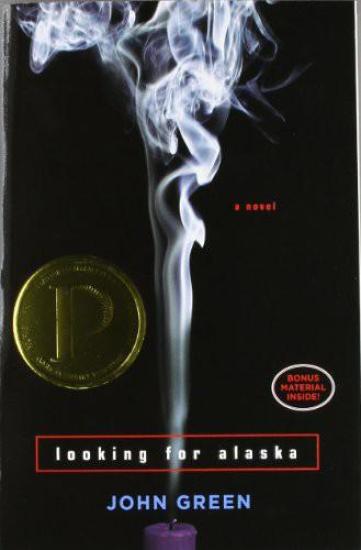
Rating: ****
Tags: Lang:en
Publisher: Speak
Added: July 12, 2018
Modified: November 5, 2021
Summary
Winner of the Michael L. Printz Award An ALA Best Book for Young Adults An ALA Quick Pick A Los Angeles Times 2005 Book Prize Finalist A New York Public Library Book for the Teen Age A 2005 Booklist Editor’s Choice A 2005 School Library Journal Best Book of the Year
Before. Miles “Pudge” Halter is done with his
safe life at home. His whole life has been one big non-event,
and his obsession with famous last words has only made him
crave “the Great Perhaps” even more (Francois
Rabelais, poet). He heads off to the sometimes crazy and
anything-but-boring world of Culver Creek Boarding School,
and his life becomes the opposite of safe. Because down the
hall is Alaska Young. The gorgeous, clever, funny, sexy,
self-destructive, screwed up, and utterly fascinating Alaska
Young. She is an event unto herself. She pulls Pudge into her
world, launches him into the Great Perhaps, and steals his
heart. Then. . . . After. Nothing is ever the same.
Grade 9 Up - Sixteen-year-old Miles Halter's adolescence
has been one long nonevent - no challenge, no girls, no
mischief, and no real friends. Seeking what Rabelais called
the "Great Perhaps," he leaves Florida for a boarding school
in Birmingham, AL. His roommate, Chip, is a dirt-poor genius
scholarship student with a Napoleon complex who lives to
one-up the school's rich preppies. Chip's best friend is
Alaska Young, with whom Miles and every other male in her
orbit falls instantly in love. She is literate, articulate,
and beautiful, and she exhibits a reckless combination of
adventurous and self-destructive behavior. She and Chip teach
Miles to drink, smoke, and plot elaborate pranks. Alaska's
story unfolds in all-night bull sessions, and the depth of
her unhappiness becomes obvious. Green's dialogue is crisp,
especially between Miles and Chip. His descriptions and
Miles's inner monologues can be philosophically dense, but
are well within the comprehension of sensitive teen readers.
The chapters of the novel are headed by a number of days
"before" and "after" what readers surmise is Alaska's
suicide. These placeholders sustain the mood of possibility
and foreboding, and the story moves methodically to its
ambiguous climax. The language and sexual situations are
aptly and realistically drawn, but sophisticated in nature.
Miles's narration is alive with sweet, self-deprecating
humor, and his obvious struggle to tell the story truthfully
adds to his believability. Like Phineas in John Knowles's
A Separate Peace(S & S, 1960), Green draws
Alaska so lovingly, in self-loathing darkness as well as
energetic light, that readers mourn her loss along with her
friends.
- Johanna Lewis, New York Public Library
Readers will only hope that this is not the last word from
this promising new author. (Publishers Weekly)
From School Library Journal
Copyright © Reed Business Information, a division
of Reed Elsevier Inc. All rights reserved.
Review